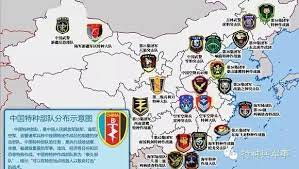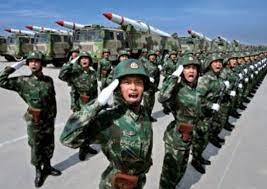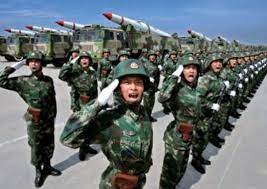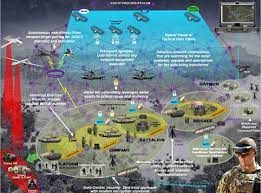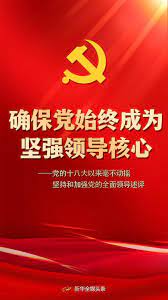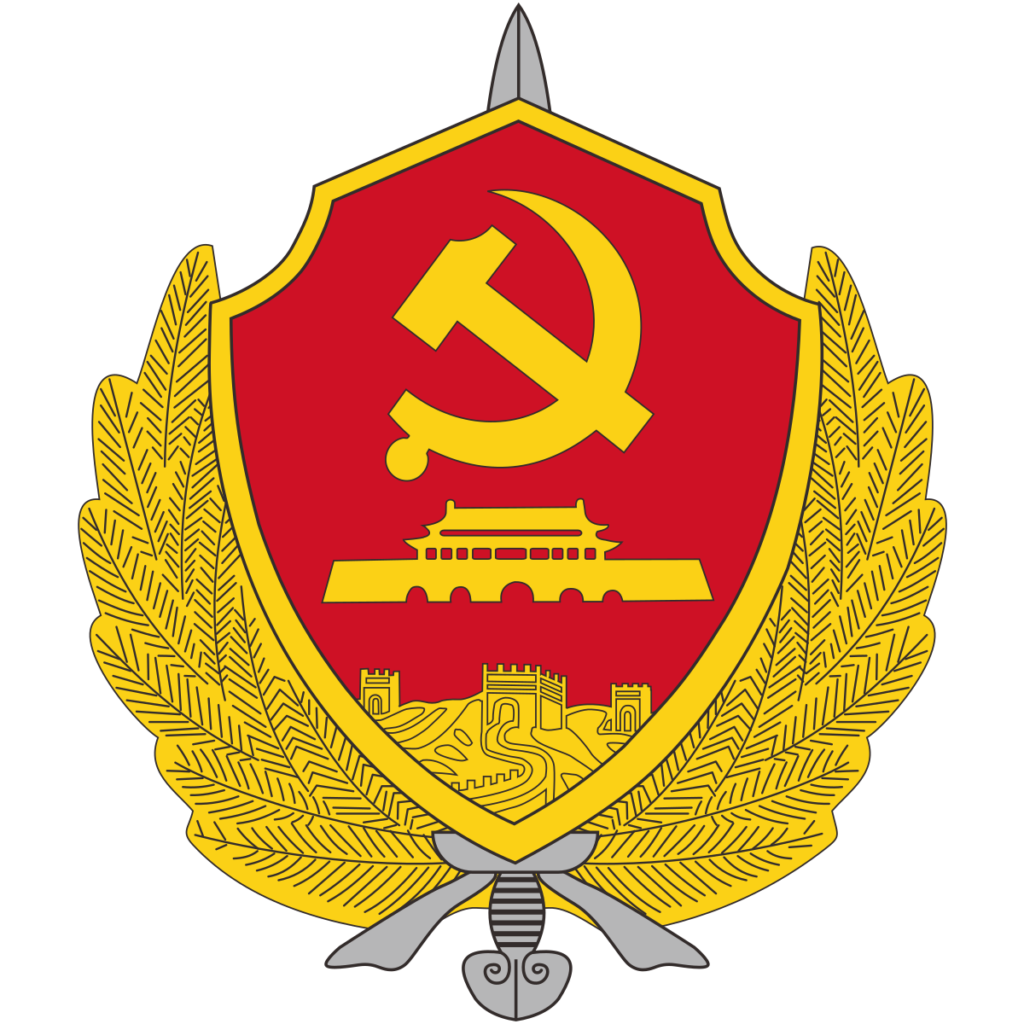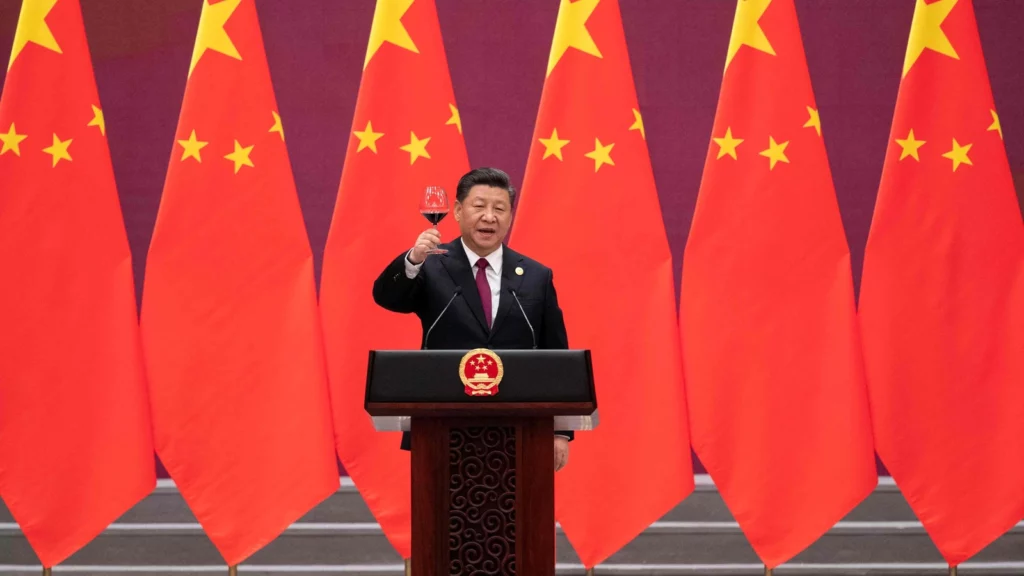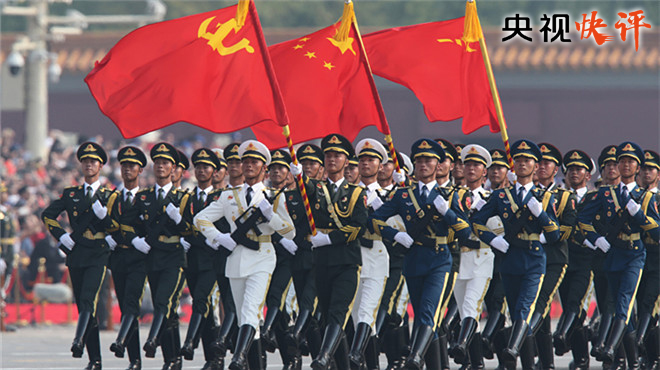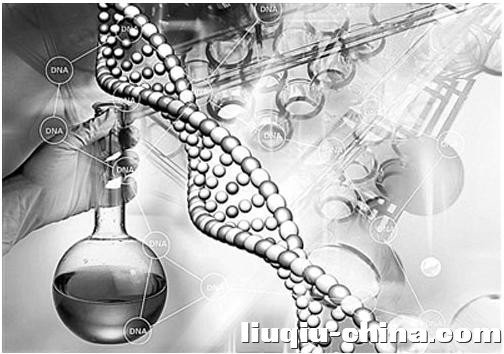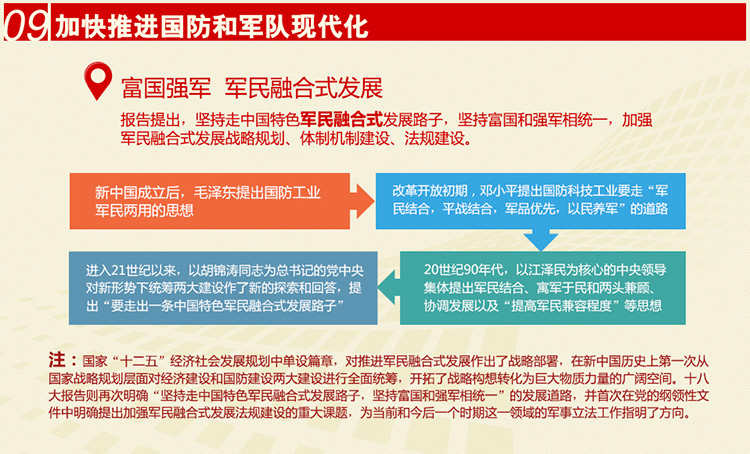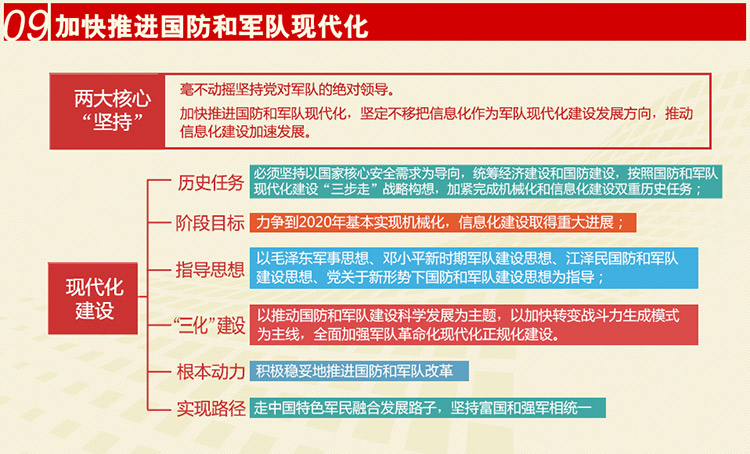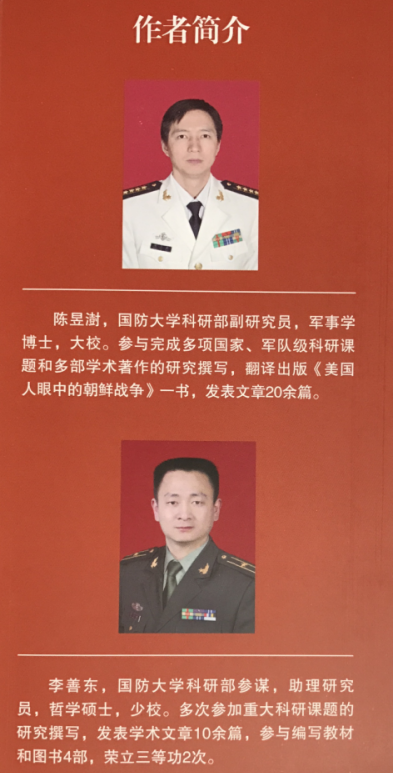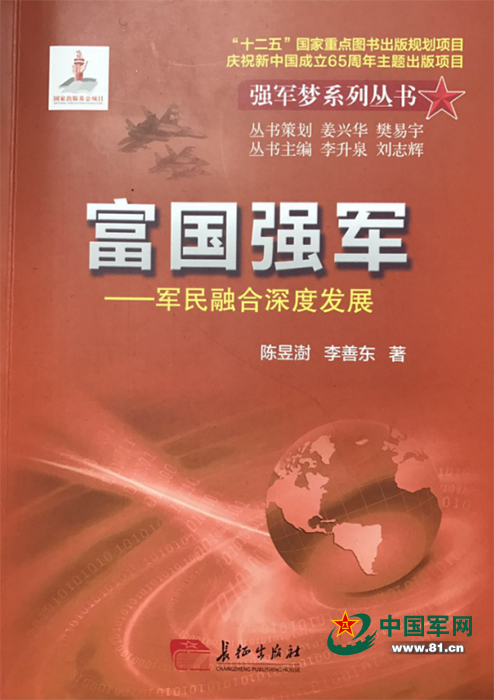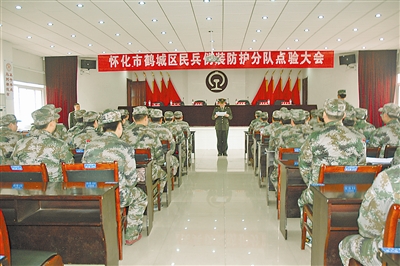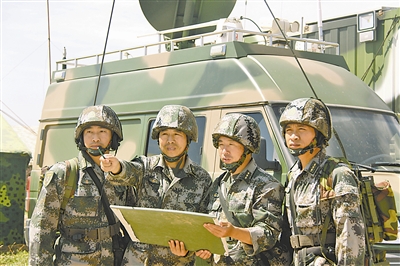(Authorized to Publish) Biosafety Law of the People’s Republic of China
Modern English:
Xinhua News Agency, Beijing, October 17th
Biosafety Law of the People’s Republic of China
(Adopted at the 22nd Meeting of the Standing Committee of the 13th National People’s Congress on October 17, 2020)
table of Contents
Chapter One General Provisions
Chapter Two: Biosafety Risk Prevention and Control System
Chapter III: Prevention and Control of Major New Emergent Infectious Diseases, Animal and Plant Epidemics
Chapter Four: Biotechnology Research, Development and Application Safety
Chapter 5: Biosafety of Pathogenic Microorganism Laboratory
Chapter VI: Human Genetic Resources and Biological Resources Security
Chapter 7: Preventing Bioterrorism and Biological Weapons Threats
Chapter 8: Biosafety Capacity Building
Chapter 9 Legal Liability
Chapter 10 Supplementary Provisions
Chapter One General Provisions
Article 1 “In order to maintain national security, prevent and respond to biosecurity risks, protect people’s lives and health, protect biological resources and the ecological environment, promote the healthy development of biotechnology, promote the construction of a community with a shared future for mankind, and realize the harmonious coexistence of man and nature, this law is formulated.
Article 2 “Biosecurity” as used in this law means that the state effectively prevents and responds to the threats of dangerous biological factors and related factors. Biotechnology can develop stably and healthily. People’s lives and health and ecosystems are relatively in a state of no danger and no threats. The field has the ability to maintain national security and sustainable development.
This law applies to the following activities:
(1) Preventing and controlling major new outbreaks of infectious diseases, animal and plant epidemics;
(2) Research, development and application of biotechnology;
(3) Biosafety management of pathogenic microorganism laboratories;
(4) Safety management of human genetic resources and biological resources;
(5) Prevent the invasion of alien species and protect biodiversity;
(6) Dealing with microbial resistance;
(7) Preventing bioterrorism attacks and defending against the threat of biological weapons;
(8) Other activities related to biosafety.
Article 3: Biosecurity is an important part of national security. Maintaining biosecurity should implement the overall national security concept, coordinate development and security, and adhere to the principles of people-oriented, risk prevention, classified management, and coordination.
Article 4: Persist in the leadership of the Communist Party of China in national biosafety work, establish and improve the national biosafety leadership system, strengthen the construction of the national biosafety risk prevention and control and governance system, and improve the national biosafety governance capabilities.
Article 5: The state encourages innovation in biotechnology, strengthens the construction of biosafety infrastructure and biotechnology personnel, supports the development of the bioindustry, promotes the level of biotechnology with innovation, and enhances the ability to guarantee biosafety.
Article 6: The state strengthens international cooperation in the field of biosafety, fulfills the obligations stipulated in the international treaties that the People’s Republic of China has concluded or participated in, supports participation in biotechnology exchanges and cooperation and international rescue of biosafety incidents, and actively participates in the research and formulation of international biosafety regulations, Promote the improvement of global biosafety governance.
Article 7 People’s governments at all levels and their relevant departments shall strengthen the publicity and popularization of biosafety laws and regulations and biosafety knowledge, guide grassroots mass autonomous organizations and social organizations to carry out biosafety laws and regulations and biosafety knowledge publicity, and promote biosafety in the whole society Raising awareness.
Relevant scientific research institutions, medical institutions, and other enterprises and institutions shall incorporate biosafety laws and regulations and biosafety knowledge into the content of education and training, and strengthen the cultivation of biosafety awareness and ethical awareness of students and practitioners.
The news media should carry out public welfare propaganda of biosafety laws and regulations and biosafety knowledge, conduct public opinion supervision on biosafety violations, and enhance the public’s awareness of social responsibility for maintaining biosafety.
Article 8: No unit or individual may endanger biological safety.
Any unit or individual has the right to report acts endangering biosafety; the department receiving the report shall deal with it in a timely manner in accordance with the law.
Article 9: People’s governments at or above the county level and their relevant departments shall commend and reward units and individuals that have made outstanding contributions to biosafety work in accordance with national regulations.
Chapter Two: Biosafety Risk Prevention and Control System
Article 10: The central national security leadership agency is responsible for the decision-making and coordination of national biosecurity work, researching, formulating and guiding the implementation of the national biosecurity strategy and related major guidelines and policies, coordinating major issues and important tasks of national biosecurity, and establishing national biosecurity Work coordination mechanism.
Provinces, autonomous regions, and municipalities directly under the Central Government have established biosafety work coordination mechanisms to organize, coordinate, and supervise and promote biosafety-related work within their administrative regions.
Article 11: The national biosafety work coordination mechanism is composed of the competent departments of the State Council for health, agriculture and rural areas, science and technology, foreign affairs and other relevant military agencies, analyzes and judges the national biosafety situation, organizes, coordinates, and supervises and promotes national biosafety related work. The National Biosafety Work Coordination Mechanism establishes an office to be responsible for the daily work of the coordination mechanism.
The member units of the National Biosafety Work Coordination Mechanism and other relevant departments of the State Council are responsible for biosafety-related work according to the division of responsibilities.
Article 12: The National Biosafety Work Coordination Mechanism shall establish an expert committee to provide decision-making consultation for the research, policy formulation and implementation of the national biosafety strategy.
Relevant departments of the State Council organize the establishment of biosafety technical consultation expert committees in related fields and industries to provide technical support such as consultation, evaluation, and demonstration for biosafety work.
Article 13: Local people’s governments at all levels are responsible for the biosafety work within their administrative areas.
Relevant departments of local people’s governments at or above the county level are responsible for biosafety-related work according to the division of responsibilities.
The grassroots mass autonomous organizations shall assist the local people’s government and relevant departments in the prevention and control of biosafety risks, emergency response, publicity and education, etc.
Relevant units and individuals shall cooperate in the prevention and control of biosafety risks and emergency response.
Article 14: The state establishes a biosafety risk monitoring and early warning system. The National Biosafety Work Coordination Mechanism organizes the establishment of a national biosafety risk monitoring and early warning system to improve biosafety risk identification and analysis capabilities.
Article 15: The State establishes a biosafety risk investigation and assessment system. The national biosafety work coordination mechanism should regularly organize and conduct biosafety risk surveys and assessments based on risk monitoring data, materials and other information.
Under any of the following circumstances, relevant departments shall promptly conduct biosafety risk investigation and assessment, and take necessary risk prevention and control measures in accordance with the law:
(1) It is found that there may be a biosafety risk through risk monitoring or receiving a report;
(2) In order to determine the key areas and key projects for supervision and management, formulate and adjust biosafety-related directories or lists;
(3) The occurrence of major new outbreaks of infectious diseases, animal and plant epidemics and other incidents that endanger biological safety;
(4) Other situations that need to be investigated and evaluated.
Article 16: The state establishes a biosafety information sharing system. The National Biosafety Work Coordination Mechanism organizes the establishment of a unified national biosafety information platform. Relevant departments should submit biosafety data, materials and other information to the national biosafety information platform to realize information sharing.
Article 17: The state establishes a biosafety information release system. Major biosafety information such as the overall national biosafety situation, major biosafety risk warning information, major biosafety incidents and their investigation and processing information, will be released by the member units of the National Biosafety Work Coordination Mechanism according to the division of responsibilities; other biosafety information will be released by relevant departments of the State Council And local people’s governments at or above the county level and their relevant departments in accordance with their duties and powers.
No unit or individual may fabricate or disseminate false biosafety information.
Article 18: The state establishes a biosafety list and inventory system. According to the needs of biosafety work, the State Council and its relevant departments formulate and publish lists or lists of materials, equipment, technologies, activities, important biological resource data, infectious diseases, animal and plant diseases, and invasive alien species that involve biosafety, and adjust them dynamically .
Article 19: The state establishes a biosafety standard system. The standardization department of the State Council and other relevant departments of the State Council shall formulate and improve relevant standards in the field of biosafety in accordance with the division of responsibilities.
The National Biosafety Work Coordination Mechanism organizes relevant departments to strengthen the coordination and connection of biosafety standards in different fields, and establish and improve a biosafety standard system.
Article 20: The state establishes a biosafety review system. For major events and activities in the biological field that affect or may affect national security, relevant departments of the State Council shall conduct a biosafety review to effectively prevent and resolve biosafety risks.
Article 21: The state establishes an orderly and efficient biosafety emergency system with unified leadership, coordination and linkage.
Relevant departments of the State Council shall organize the formulation of emergency plans for biosafety incidents in related fields and industries, and carry out emergency drills, emergency handling, emergency rescue and post-event recovery in accordance with the emergency plans and unified deployment.
Local people’s governments at or above the county level and their relevant departments shall formulate, organize, guide and supervise relevant enterprises and institutions to formulate emergency plans for biosafety incidents, strengthen emergency preparedness, personnel training and emergency drills, and carry out emergency response to biosafety incidents, emergency rescue and after-events Restoration and other work.
The Chinese People’s Liberation Army and the Chinese People’s Armed Police Force, in accordance with the order of the Central Military Commission, participate in the emergency response and rescue of biosecurity incidents in accordance with the law.
Article 22: The state establishes a system for investigating and tracing the source of biosafety incidents. In the event of major new outbreaks of infectious diseases, animal and plant epidemics, and unexplained biosafety incidents, the national biosafety work coordination mechanism should organize investigation and traceability, determine the nature of the incident, comprehensively evaluate the impact of the incident, and provide opinions and suggestions.
Article 23: The state establishes a national entry system for animals and plants, animal and plant products, and high-risk biological factors that enter the country for the first time or resume entry after a suspension.
People, transportation vehicles, containers, goods, articles, packaging, and ballast water discharge of ships entering and leaving the country shall meet the requirements of my country’s biosafety management.
The customs shall deal with the discovered inbound, outbound and transit biosafety risks in accordance with the law. Persons, means of transportation, goods, articles, etc. that have been assessed as high risk of biosafety shall enter the country through designated frontier ports and adopt strict risk prevention and control measures.
Article 24: The state establishes a system for responding to major overseas biosecurity incidents. In the event of a major biosafety incident abroad, the customs shall adopt emergency biosafety prevention and control measures in accordance with the law, strengthen document verification, increase the proportion of inspections, and suspend the entry of relevant personnel, means of transport, goods, and articles. When necessary, with the consent of the State Council, measures such as temporary closure of relevant ports and blockade of relevant borders may be adopted.
Article 25: Relevant departments of the people’s government at or above the county level shall carry out biosafety supervision and inspection work in accordance with the law, and the units and individuals inspected shall cooperate, truthfully explain the situation, provide information, and shall not refuse or obstruct.
Supervision and inspection work involving high professional and technical requirements and difficult law enforcement operations should involve biosafety professional and technical personnel.
Article 26: Relevant departments of the people’s government at or above the county level may take the following measures in accordance with the law to implement biosafety supervision and inspection:
(1) Enter the inspected unit, location, or place suspected of committing biosafety violations to conduct on-site monitoring, survey, inspection or verification;
(2) Get information from relevant units and individuals;
(3) Consult and copy relevant documents, data, files, records, vouchers, etc.;
(4) Sealing up places and facilities suspected of committing biosafety violations;
(5) Detain tools, equipment and related items suspected of committing biosafety violations;
(6) Other measures stipulated by laws and regulations.
Biosafety illegal information of relevant entities and individuals shall be included in the national credit information sharing platform in accordance with the law.
Chapter III: Prevention and Control of Major New Emergent Infectious Diseases, Animal and Plant Epidemics
Article 27 The competent departments of the State Council for health, agriculture and rural areas, forestry and grassland, customs, and ecological environment shall establish a network of newly emerging infectious diseases, animal and plant epidemics, entry and exit quarantine, and biotechnology environmental safety monitoring networks, and organize the layout of monitoring sites, Establish and improve the monitoring information reporting system, carry out active monitoring and pathogen detection, and incorporate it into the national biosafety risk monitoring and early warning system.
Article 28 Disease prevention and control agencies, animal disease prevention and control agencies, and plant disease and insect pest prevention and control agencies (hereinafter collectively referred to as professional agencies) shall carry out active monitoring of infectious diseases, animal and plant diseases and diseases of unknown origin that are included in the monitoring scope, collecting, Analyze and report monitoring information to predict the occurrence and prevalence of emerging infectious diseases, animal and plant diseases.
Relevant departments of the State Council, local people’s governments at or above the county level, and their relevant departments shall issue early warnings in a timely manner based on forecasts and duties and powers, and take corresponding prevention and control measures.
Article 29: Any unit or individual discovering infectious diseases or animal or plant diseases shall promptly report to medical institutions, relevant professional institutions or departments.
Medical institutions, professional institutions and their staff shall report infectious diseases, animal and plant diseases or cluster diseases of unknown cause in a timely manner and adopt protective measures.
If a report is required in accordance with the law, no unit or individual shall conceal, misrepresent, postpone the report, or omit the report, or instruct others to conceal, misrepresent, or postpone the report, or hinder others from reporting.
Article 30: The state establishes a joint prevention and control mechanism for major newly emerging infectious diseases and animal and plant epidemics.
In the event of a major new outbreak of infectious diseases, animal and plant epidemics, timely control measures shall be taken in accordance with relevant laws and regulations and emergency plans; the competent departments of health, agriculture, rural areas, and forestry and grassland under the State Council shall immediately organize epidemic consultations, discussion, and judgment, The conclusions of the research are reported to the central national security leadership agency and the State Council, and other member units of the National Biosecurity Work Coordination Mechanism and other relevant departments of the State Council are notified.
In the occurrence of major new outbreaks of infectious diseases, animal and plant epidemics, local people’s governments at all levels shall perform the responsibilities of epidemic prevention and control in their respective administrative areas, strengthen organization and leadership, carry out group prevention and control, medical treatment, and mobilize and encourage social forces in an orderly manner Participate in epidemic prevention and control work.
Article 31 The State strengthens the construction of the joint prevention and control capacity of infectious diseases and animal and plant epidemics at borders and ports, and establishes an international cooperation network for the prevention and control of infectious diseases and animal and plant epidemics to detect and control major emerging and sudden infectious diseases and animal and plant epidemics as early as possible .
Article 32: The state protects wild animals, strengthens animal epidemic prevention, and prevents the spread of animal-borne infectious diseases.
Article 33: The State strengthens the management of the use and residues of antimicrobial drugs and other antimicrobial drugs, and supports basic research and scientific and technological breakthroughs in response to microbial resistance.
The health authorities of the people’s governments at or above the county level shall strengthen the guidance and supervision of the rational use of drugs by medical institutions, and take measures to prevent the unreasonable use of antimicrobial drugs. The agricultural, rural and forestry and grassland administrative departments of the people’s governments at or above the county level shall strengthen the guidance and supervision of the rational use of drugs in agricultural production, take measures to prevent the unreasonable use of antimicrobial drugs, and reduce the residues in the agricultural production environment.
The State Council’s health, agriculture and rural areas, forestry and grassland, ecological environment and other competent departments and drug supervision and administration departments shall assess the harm of antimicrobial drug residues to human health and the environment according to the division of responsibilities, and establish an antimicrobial pollutant index evaluation system.
Chapter Four: Biotechnology Research, Development and Application Safety
Article 34 The State strengthens the safety management of biotechnology research, development, and application activities, and prohibits engaging in biotechnology research, development, and application activities that endanger public health, damage biological resources, destroy ecosystems and biodiversity, and other activities that endanger biosafety .
Engaged in biotechnology research and development
Development and application activities.
Engaging in biotechnology research, development and application activities shall comply with ethical principles.
Article 35 Units engaged in biotechnology research, development and application activities shall be responsible for the safety of their own biotechnology research, development and application, adopt biosafety risk prevention and control measures, and formulate biosafety training, follow-up inspections, regular reports, etc. System, strengthen process management.
Article 36: The State implements classified management of biotechnology research and development activities. According to the degree of risk of harm to public health, industrial agriculture, ecological environment, etc., biotechnology research and development activities are divided into three categories: high-risk, medium-risk, and low-risk.
The risk classification standards and directories of biotechnology research and development activities are formulated, adjusted and published by the competent departments of the State Council for science and technology, health, agriculture and rural areas in accordance with the division of responsibilities, and in conjunction with other relevant departments of the State Council.
Article 37: Engaging in biotechnology research and development activities shall abide by the national biotechnology research and development safety management regulations.
To engage in biotechnology research and development activities, one should judge the risk categories, pay close attention to changes in risks, and take timely response measures.
Article 38: Engaging in high-risk and medium-risk biotechnology research and development activities shall be conducted by a legal person organization established in accordance with the law within the territory of my country, and approval or filing shall be obtained in accordance with the law.
To engage in high-risk and medium-risk biotechnology research and development activities, risk assessment should be conducted, risk prevention and control plans and biosafety incident emergency plans should be formulated to reduce the risk of the implementation of research and development activities.
Article 39: The State implements retrospective management of important equipment and special biological factors involved in biological safety. The purchase or introduction of important equipment and special biological factors included in the control list shall be registered to ensure traceability and be reported to the relevant department of the State Council for the record.
Individuals are not allowed to purchase or possess important equipment and special biological factors that are included in the control list.
Article 40 “Clinical research on new biomedical technologies shall pass ethical review and be carried out in medical institutions with corresponding conditions; for human clinical research operations, it shall be carried out by health professionals who meet the corresponding conditions.
Article 41: Relevant departments of the State Council shall follow up and evaluate biotechnology application activities in accordance with the law, and if they find that there are biosafety risks, they shall take effective remedial and control measures in a timely manner.
Chapter 5: Biosafety of Pathogenic Microorganism Laboratory
Article 42: The State shall strengthen the management of the biosafety of pathogenic microorganism laboratories and formulate uniform laboratory biosafety standards. The pathogenic microorganism laboratory shall meet the national standards and requirements of biosafety.
To engage in pathogenic microorganism experiment activities, it is necessary to strictly abide by relevant national standards, laboratory technical specifications, and operating procedures, and take safety precautions.
Article 43: The State implements classified management of pathogenic microorganisms according to the infectivity of pathogenic microorganisms and the degree of harm to humans and animals after infection or groups.
Those engaged in the collection, preservation, and transportation of samples of highly pathogenic or suspected highly pathogenic microorganisms shall have the corresponding conditions and comply with the biosafety management regulations. The specific measures shall be formulated by the health, agricultural and rural administration departments of the State Council.
Article 44: The establishment of a pathogenic microbiology laboratory shall be approved or filed in accordance with the law.
Individuals shall not establish pathogenic microorganism laboratories or engage in pathogenic microorganism experimental activities.
Article 45: The State implements hierarchical management of pathogenic microorganism laboratories in accordance with the level of biological safety protection against pathogenic microorganisms.
The experimental activities of pathogenic microorganisms shall be carried out in laboratories of the corresponding level. Low-level pathogenic microorganism laboratories shall not engage in pathogenic microorganism experimental activities that should be conducted in high-level pathogenic microorganism laboratories as stipulated in the National Pathogenic Microorganism Catalog.
Article 46 High-level pathogenic microorganism laboratories engaged in experimental activities of highly pathogenic or suspected highly pathogenic pathogens shall be approved by the health or agricultural and rural authorities of the people’s government at or above the provincial level, and the conditions of the experimental activities shall be approved. Department report.
For pathogenic microorganisms that have not been discovered or declared to be eliminated in my country, no relevant experimental activities shall be allowed without approval.
Article 47 The pathogenic microbiology laboratory shall take measures to strengthen the management of experimental animals, prevent the escape of experimental animals, and treat the experimental animals after use in a harmless manner in accordance with national regulations, so as to realize the traceability of experimental animals. It is forbidden to introduce used experimental animals into the market.
The pathogenic microorganism laboratory shall strengthen the management of waste from experimental activities, dispose of waste water, waste gas and other wastes in accordance with the law, and adopt measures to prevent pollution.
Article 48 The establishment unit of the pathogenic microorganism laboratory is responsible for the biosafety management of the laboratory, formulates a scientific and strict management system, regularly inspects the implementation of relevant biosafety regulations, and conducts laboratory facilities, equipment, materials, etc. Check, maintain and update to ensure that it meets national standards.
The legal representative and the person in charge of the laboratory establishing the pathogenic microorganism laboratory shall be responsible for the biological safety of the laboratory.
Article 49: The establishment of a pathogenic microorganism laboratory shall establish and improve a safety protection system and adopt safety protection measures to ensure the safety of the laboratory and its pathogenic microorganisms.
The state strengthens the security of high-level pathogenic microorganism laboratories. High-level pathogenic microorganism laboratories shall accept the supervision and guidance of the relevant laboratory safety and security work of public security organs and other departments, and strictly prevent the leakage, loss, theft and robbing of highly pathogenic microorganisms.
The state establishes a high-level pathogenic microbial laboratory personnel entry review system. Personnel entering a high-level pathogenic microorganism laboratory shall be approved by the person in charge of the laboratory. Those that may affect the biosafety of the laboratory shall not be approved; for those approved to enter, safety measures shall be taken.
Article 50: The establishment of a pathogenic microorganism laboratory shall formulate emergency plans for biosafety incidents, and organize personnel training and emergency drills on a regular basis. Where highly pathogenic pathogenic microorganisms are leaked, lost, stolen, robbed, or other biosafety risks, timely control measures shall be taken in accordance with the provisions of the emergency plan, and reports shall be made in accordance with national regulations.
Article 51: The people’s government at the provincial level where the pathogenic microbiology laboratory is located and its health authority shall strengthen the allocation of medical resources for infectious diseases at the laboratory location, and improve the medical treatment and treatment capabilities for infectious diseases.
Article 52: The enterprise’s biosafety management of production workshops involving pathogenic microorganism operations shall be carried out in accordance with the regulations of the relevant pathogenic microorganism laboratory and other biosafety management regulations.
The construction and management of biosafety laboratories involving the operation of biological toxins, plant pests and other biological factors shall be implemented in accordance with the regulations of the relevant pathogenic microorganism laboratories.
Chapter VI: Human Genetic Resources and Biological Resources Security
Article 53: The state strengthens the management and supervision of the collection, preservation, utilization, and external provision of human genetic resources and biological resources in our country to ensure the safety of human genetic resources and biological resources.
The country has sovereignty over my country’s human genetic resources and biological resources.
Article 54: The State conducts surveys of human genetic resources and biological resources.
The competent department of science and technology of the State Council organizes the investigation of human genetic resources in my country, and formulates the declaration and registration methods for human genetic resources of important genetic families and specific regions.
The competent departments of the State Council for science and technology, natural resources, ecological environment, health, agriculture and rural areas, forestry and grassland, and traditional Chinese medicine, according to the division of responsibilities, organize biological resource surveys and formulate important biological resource declaration and registration methods.
Article 55: The collection, preservation, utilization, and external provision of my country’s human genetic resources shall conform to ethical principles and shall not endanger public health, national security and social public interests.
Article 56 The following activities shall be approved by the department in charge of science and technology under the State Council:
(1) Collecting human genetic resources of important genetic families in my country, specific regions, or the types and quantities of human genetic resources specified by the competent department of science and technology under the State Council;
(2) Preserving my country’s human genetic resources;
(3) Utilizing my country’s human genetic resources to carry out international scientific research cooperation;
(4) Transporting, mailing, and carrying out of my country’s human genetic resources materials.
The provisions of the preceding paragraph do not include the collection and preservation of human genetic resources and related activities for the purposes of clinical diagnosis and treatment, blood collection and supply services, investigation and punishment of illegal crimes, doping testing, and funerals.
In order to obtain the marketing authorization of relevant drugs and medical devices in my country, the use of human genetic resources in clinical trial institutions to carry out international cooperative clinical trials without involving the export of human genetic resources does not require approval; however, the intended use should be used before the clinical trials The types, quantities and uses of the human genetic resources shall be filed with the department in charge of science and technology under the State Council.
Overseas organizations, individuals and institutions established or actually controlled by them shall not collect or preserve my country’s human genetic resources within the territory of my country, or provide my country’s human genetic resources abroad.
Article 57: Where the information on human genetic resources of our country is provided or open for use to overseas organizations, individuals and institutions established or actually controlled by them, they shall report to the competent department of science and technology under the State Council in advance and submit a backup of the information.
Article 58 “The collection, preservation, utilization, and transportation of rare, endangered, endemic species and genetic resources such as individuals, organs, tissues, cells, genes, etc., that can be used for regeneration or reproduction and passage out of our country shall comply with relevant laws and regulations.
Foreign organizations, individuals, and institutions established or actually controlled by them shall obtain approval in accordance with the law to obtain and utilize my country’s biological resources.
Article 59: The use of my country’s biological resources for international scientific research cooperation shall be approved in accordance with the law.
The use of my country’s human genetic resources and biological resources to carry out international scientific research cooperation should ensure that the Chinese unit and its researchers participate in the research in the whole process and substantively, and share relevant rights and interests in accordance with the law.
Article 60: The state strengthens the prevention and response to the invasion of alien species and protects biodiversity. The agricultural and rural authorities of the State Council, in conjunction with other relevant departments of the State Council, formulate lists of invasive alien species and management measures.
Relevant departments of the State Council strengthen the investigation, monitoring, early warning, control, evaluation, removal, and ecological restoration of invasive alien species in accordance with the division of responsibilities.
No unit or individual may introduce, release or discard alien species without approval.
Chapter 7: Preventing Bioterrorism and Biological Weapons Threats
Article 61: The state shall take all necessary measures to prevent the threat of bioterrorism and biological weapons.
It is prohibited to develop, manufacture or otherwise acquire, store, possess and use biological weapons.
It is prohibited to instigate, fund, assist others to develop, manufacture or otherwise acquire biological weapons in any way.
Article 62: Relevant departments of the State Council shall formulate, modify, and publish lists of organisms, biotoxins, equipment or technologies that can be used in bioterrorism activities and the manufacture of biological weapons, strengthen supervision and control, and prevent their use in the manufacture of biological weapons or terrorist purposes .
Article 63: Relevant departments of the State Council and relevant military agencies shall, in accordance with the division of responsibilities, strengthen the control of the entry and exit, import and export, acquisition, manufacture, and transfer of organisms, biotoxins, equipment or technology that can be used in bioterrorism activities and the manufacture of biological weapons. The monitoring and investigation of activities such as release and release, and take necessary preventive and disposal measures.
Article 64: Relevant departments of the State Council, provincial people’s governments and their relevant departments are responsible for organizing the rescue and placement of personnel after bioterrorism attacks and biological weapons attacks, environmental disinfection, ecological restoration, safety monitoring, and social order restoration.
The relevant departments of the State Council, the provincial people’s governments and their relevant departments shall effectively guide public opinion to scientifically and accurately report on bioterrorism attacks and biological weapon attacks, and timely release information on evacuation, transfer and emergency evacuation, and deal with pollution during emergency response and recovery. Long-term environmental monitoring and health monitoring are carried out in the area and personnel.
Article 65: The State organizes and conducts investigations on biological weapons left over from war in our country and their harmful results and potential impacts.
The state organizes the construction of facilities for storing and processing biological weapons left over from war to ensure the safe disposal of biological weapons left over from war.
Chapter 8: Biosafety Capacity Building
Article 66: The State shall formulate a biosafety development plan, strengthen the construction of biosafety capabilities, and improve the ability and level of responding to biosafety incidents.
People’s governments at or above the county level shall support the development of biosafety undertakings, and according to the division of powers, include the relevant expenditures for supporting the development of the following biosafety undertakings into the government budget:
(1) Construction and operation of the monitoring network;
(2) Reserves of emergency response and prevention and control materials;
(3) Construction and operation of key infrastructure;
(4) Research and development of key technologies and products;
(5) Investigation and preservation of human genetic resources and biological resources;
(6) Other important biosafety undertakings stipulated by laws and regulations.
Article 67 The State takes measures to support biosafety technology research, strengthens biosafety risk prevention and management technology research, integrates superior strengths and resources, establishes a multidisciplinary and multisectoral collaborative innovation joint research mechanism, and promotes the core and key technologies of biosafety. The output, transformation and application of major defense products will improve the scientific and technological guarantee capabilities of biosafety.
Article 68: The State shall make overall arrangements for the construction of national biosafety infrastructure. According to the division of responsibilities, the relevant departments of the State Council will speed up the construction of a biosafety national strategic resource platform for biological information, human genetic resource preservation, bacterial (viral) species preservation, animal and plant genetic resource preservation, high-level pathogenic microorganism laboratories, etc., and establish a shared utilization mechanism , To provide strategic guarantee and support for biosafety technological innovation.
Article 69: Relevant departments of the State Council shall, in accordance with the division of responsibilities, strengthen the training of basic biological scientific research personnel and professional technical personnel in the biological field, and promote the construction of basic biological sciences and scientific research.
Practitioners in important positions in the national biosafety infrastructure shall have qualified qualifications, and relevant information shall be filed with the relevant departments of the State Council and receive on-the-job training.
Article 70: The state strengthens material reserves for the prevention and control of major emerging infectious diseases, animal and plant epidemics and other biological safety risks.
The state strengthens the research, development and technical reserves of materials such as biosafety emergency medicines and equipment. The relevant departments of the State Council shall implement relevant measures for the research, development and technical reserve of materials such as biosafety emergency medicines and equipment according to the division of responsibilities.
The relevant departments of the State Council and local people’s governments at or above the county level and their relevant departments shall guarantee the production, supply and deployment of medical rescue equipment, medicines, medical devices and other materials required for emergency response to biosafety incidents; the competent department of transportation shall organize and coordinate in a timely manner Transport business units give priority to delivery.
Article 71: The State shall provide effective protective measures and medical security for personnel engaged in high-risk biosafety work such as experimental activities of highly pathogenic pathogenic microorganisms and on-site disposal of biosafety incidents.
Chapter 9 Legal Liability
Article 72: In violation of the provisions of this law, personnel who perform biosafety management duties abuse their powers, neglect their duties, engage in malpractices for personal gain or commit other illegal acts in biosafety work, and shall be punished in accordance with the law.
Article 73 In violation of the provisions of this law, medical institutions, professional institutions or their staff conceal, lie, postpone, or omit reporting, instruct others to conceal, lie, postpone reporting, or prevent others from reporting infectious diseases, animal and plant diseases Or cluster diseases of unknown cause, people at or above the county level
, Give sanctions according to law, and can suspend practice activities for a certain period of time according to law until the relevant practice certificate is revoked.
Violation of the provisions of this law by fabricating or disseminating false biosafety information constitutes a violation of public security management, the public security organ shall impose public security management penalties in accordance with the law.
Article 74 Anyone who violates the provisions of this law and engages in biotechnology research, development, and application activities prohibited by the state shall be ordered by the health, science and technology, agricultural and rural authorities of the people’s government at or above the county level to stop the illegal activities and confiscate them. Illegal gains, technical materials, tools, equipment, raw materials and other items used for illegal acts shall be fined not less than 1 million yuan but not more than 10 million yuan; if the illegal gains are more than 1 million yuan, more than ten times the illegal gains shall be imposed. A fine of less than ten times, and it is possible to prohibit the relevant biotechnology research, development and application activities within a certain period of time according to law, and to revoke relevant licenses; for the legal representative, the main person in charge, the directly responsible person in charge and other directly responsible persons, Penalties shall be imposed in accordance with the law, and a fine of 100,000 yuan up to 200,000 yuan shall be imposed, the corresponding biotechnology research, development and application activities shall be prohibited from ten years to life, and the relevant practice certificates shall be revoked in accordance with the law.
Article 75 Anyone who violates the provisions of this law and engages in biotechnology research and development activities that fails to comply with the national biotechnology research and development safety management regulations shall be ordered by the relevant departments of the people’s government at or above the county level according to the division of responsibilities to make corrections and give warnings, and may be dealt with concurrently. A fine of not less than 20,000 yuan but not more than 200,000 yuan; if it refuses to make corrections or causes serious consequences, it shall be ordered to stop research and development activities, and a fine of not less than 200,000 yuan but not more than 2 million yuan shall be imposed.
Article 76 Violation of the provisions of this law by engaging in experimental activities of pathogenic microorganisms and failing to conduct experimental activities of pathogenic microorganisms at the corresponding level, or a high-level pathogenic microorganism laboratory engaged in experimental activities of highly pathogenic or suspected highly pathogenic microorganisms without approval According to the division of responsibilities, the health, agricultural and rural authorities of the local people’s government at or above the county level shall order to stop illegal activities, supervise the destruction of pathogenic microorganisms used in experimental activities or send them to the preservation institution, and give warnings; cause the spread and epidemic of infectious diseases Or if there are other serious consequences, the legal representative, the main person in charge, the directly responsible person in charge, and other directly responsible persons shall be dismissed or expelled in accordance with the law.
Article 77 Anyone who, in violation of the provisions of this Law, introduces used experimental animals into the market shall be ordered to make corrections by the competent science and technology department of the people’s government at or above the county level, the illegal gains shall be confiscated, and the penalty shall be between RMB 200,000 and RMB 1 million. If the illegal income is more than 200,000 yuan, a fine of five to ten times the illegal income shall be imposed; if the circumstances are serious, the relevant permit shall be revoked by the issuing department.
Article 78 Anyone who violates the provisions of this law and commits one of the following acts shall be ordered by the relevant departments of the people’s government at or above the county level according to the division of responsibilities to make corrections, confiscate illegal gains, give a warning, and may also impose a penalty of more than 100,000 yuan and 1 million yuan. The following fines:
(1) The purchase or introduction of important equipment and special biological factors included in the control list have not been registered, or have not been reported to the relevant department of the State Council for the record;
(2) Individuals purchase or possess important equipment or special biological factors included in the control list;
(3) Individuals set up pathogenic microorganism laboratories or engage in pathogenic microorganism experimental activities;
(4) Enter a high-level pathogenic microorganism laboratory without the approval of the person in charge of the laboratory.
Article 79 Anyone who, in violation of the provisions of this law, collects and preserves China’s human genetic resources or uses China’s human genetic resources to carry out international scientific research cooperation shall be ordered by the State Council’s science and technology department to stop illegal activities and confiscate illegal gains and illegal activities. The collection and preservation of human genetic resources shall also be fined between 500,000 yuan and 5 million yuan, and if the illegal gains are more than 1 million yuan, a fine of 5 times to 10 times the illegal gains shall be imposed; if the circumstances are serious, The legal representative, the main person in charge, the directly responsible person in charge and other directly responsible persons shall be punished in accordance with the law, and shall be prohibited from engaging in corresponding activities within five years.
Article 80: In violation of the provisions of this Law, foreign organizations, individuals and institutions established or actually controlled by them collect and preserve human genetic resources in my country, or provide human genetic resources in my country abroad, shall be ordered to stop by the department in charge of science and technology under the State Council. For illegal acts, confiscate illegal income and illegally collected and preserved human genetic resources, and impose a fine of 1 million yuan to 10 million yuan; if the illegal gains are more than 1 million yuan, the illegal gains shall be imposed 10 times more than 20 times. Fines below times.
Article 81 Anyone who violates the provisions of this law and introduces alien species without approval shall be confiscated by the relevant departments of the people’s government at or above the county level in accordance with the division of responsibilities, and impose a penalty of 50,000 yuan to 250,000 yuan. Fine.
Anyone who violates the provisions of this law and releases or discards alien species without approval shall be ordered by the relevant departments of the people’s government at or above the county level according to the division of responsibilities to capture, retrieve, release or discard the alien species within a time limit, and impose a penalty of 10,000 yuan to 50,000 yuan. Fines below RMB yuan.
Article 82: Anyone who violates the provisions of this law and constitutes a crime shall be investigated for criminal responsibility in accordance with the law; those who cause personal, property or other damage shall bear civil responsibility in accordance with the law.
Article 83: For biosafety violations that violate the provisions of this law, this law does not provide for legal responsibilities, and other relevant laws and administrative regulations have provisions in accordance with those provisions.
Article 84: Foreign organizations or individuals who enter the country through transportation, mailing, carrying dangerous biological factors, or otherwise endanger my country’s biological safety, shall be investigated for legal responsibility in accordance with the law and may take other necessary measures.
Chapter 10 Supplementary Provisions
Article 85 The meaning of the following terms in this law:
(1) Biological factors refer to animals, plants, microorganisms, biological toxins and other biologically active substances.
(2) A major emerging and sudden infectious disease refers to an infectious disease that has appeared in my country for the first time or has been declared eliminated and reoccurs, or occurs suddenly, causing or likely to cause serious damage to public health and life safety, causing social panic, and affecting social stability. .
(3) Major new sudden animal epidemics refer to the recurrence of animal epidemics that have occurred in my country for the first time or have been declared to be eliminated, or latent animal epidemics with high morbidity and mortality have suddenly occurred and spread rapidly, giving the breeding industry production safety Circumstances that cause serious threats, hazards, and may cause harm to public health and life safety.
(4) A major new outbreak of plant epidemics refers to fungi, bacteria, viruses, insects, nematodes, weeds, rodents, mollusks, etc. that have severely harmed plants that have occurred in my country for the first time or have already been announced to be eliminated, or cause pests and diseases again, or A situation where local pests suddenly occur on a large scale and spread rapidly, causing serious damage to crops, forests and other plants.
(5) The research, development and application of biotechnology refers to the activities of scientific research, technological development and application that are engaged in the understanding, transformation, synthesis, and utilization of biology through scientific and engineering principles.
(6) Pathogenic microorganisms refer to microorganisms that can invade humans and animals and cause infections and even infectious diseases, including viruses, bacteria, fungi, rickettsia, parasites, etc.
(7) Plant pests refer to organisms such as fungi, bacteria, viruses, insects, nematodes, weeds, rodents, mollusks, etc. that can cause harm to crops, forest trees and other plants.
(8) Human genetic resources, including human genetic resource materials and information on human genetic resources. Human genetic resource materials refer to organs, tissues, cells and other genetic materials that contain human genomes, genes, and other genetic materials. Human genetic resource information refers to information such as data generated by using human genetic resource materials.
(9) Microbial resistance refers to the development of resistance of microorganisms to antimicrobial drugs, resulting in the inability of antimicrobial drugs to effectively control microbial infections.
(10) Biological weapons refer to microbial agents, other biological agents, and biological toxins produced by any source or any method that are not legitimately required for prevention, protection or other peaceful purposes; Biological toxins are used in weapons, equipment or delivery vehicles designed for hostile purposes or armed conflicts.
(11) Bioterrorism refers to the deliberate use of pathogenic microorganisms, biological toxins, etc. to carry out attacks, damage human or animal and plant health, cause social panic, and attempt to achieve specific political goals.
Article 86: If biosafety information is a state secret, it shall be managed in accordance with the “Law of the People’s Republic of China on Keeping State Secrets” and other relevant state secrets regulations.
Article 87: The biosecurity activities of the Chinese People’s Liberation Army and the Chinese People’s Armed Police Force shall be separately prescribed by the Central Military Commission in accordance with the principles stipulated in this law.
Article 88: This law shall come into force on April 15, 2021.
Mandarin Chinese:
新華社北京10月17日電
中華人民共和國生物安全法
(2020年10月17日第十三屆全國人民代表大會常務委員會第二十二次會議通過)
目錄
第一章 總則
第二章 生物安全風險防控體制
第三章 防控重大新發突發傳染病、動植物疫情
第四章 生物技術研究、開發與應用安全
第五章 病原微生物實驗室生物安全
第六章 人類遺傳資源與生物資源安全
第七章 防範生物恐怖與生物武器威脅
第八章 生物安全能力建設
第九章 法律責任
第十章 附則
第一章 總則
第一條 為了維護國家安全,防範和應對生物安全風險,保障人民生命健康,保護生物資源和生態環境,促進生物技術健康發展,推動構建人類命運共同體,實現人與自然和諧共生,制定本法。
第二條本法所稱生物安全,是指國家有效防範和應對危險生物因子及相關因素威脅,生物技術能夠穩定健康發展,人民生命健康和生態系統相對處於沒有危險和不受威脅的狀態,生物領域具備維護國家安全和持續發展的能力。
從事下列活動,適用本法:
(一)防控重大新發突發傳染病、動植物疫情;
(二)生物技術研究、開發與應用;
(三)病原微生物實驗室生物安全管理;
(四)人類遺傳資源與生物資源安全管理;
(五)防範外來物種入侵與保護生物多樣性;
(六)應對微生物耐藥;
(七)防範生物恐怖襲擊與防禦生物武器威脅;
(八)其他與生物安全相關的活動。
第三條 生物安全是國家安全的重要組成部分。維護生物安全應當貫徹總體國家安全觀,統籌發展和安全,堅持以人為本、風險預防、分類管理、協同配合的原則。
第四條 堅持中國共產黨對國家生物安全工作的領導,建立健全國家生物安全領導體制,加強國家生物安全風險防控和治理體系建設,提高國家生物安全治理能力。
第五條 國家鼓勵生物科技創新,加強生物安全基礎設施和生物科技人才隊伍建設,支持生物產業發展,以創新驅動提升生物科技水平,增強生物安全保障能力。
第六條國家加強生物安全領域的國際合作,履行中華人民共和國締結或者參加的國際條約規定的義務,支持參與生物科技交流合作與生物安全事件國際救援,積極參與生物安全國際規則的研究與製定,推動完善全球生物安全治理。
第七條各級人民政府及其有關部門應當加強生物安全法律法規和生物安全知識宣傳普及工作,引導基層群眾性自治組織、社會組織開展生物安全法律法規和生物安全知識宣傳,促進全社會生物安全意識的提升。
相關科研院校、醫療機構以及其他企業事業單位應當將生物安全法律法規和生物安全知識納入教育培訓內容,加強學生、從業人員生物安全意識和倫理意識的培養。
新聞媒體應當開展生物安全法律法規和生物安全知識公益宣傳,對生物安全違法行為進行輿論監督,增強公眾維護生物安全的社會責任意識。
第八條 任何單位和個人不得危害生物安全。
任何單位和個人有權舉報危害生物安全的行為;接到舉報的部門應當及時依法處理。
第九條 對在生物安全工作中做出突出貢獻的單位和個人,縣級以上人民政府及其有關部門按照國家規定予以表彰和獎勵。
第二章 生物安全風險防控體制
第十條中央國家安全領導機構負責國家生物安全工作的決策和議事協調,研究制定、指導實施國家生物安全戰略和有關重大方針政策,統籌協調國家生物安全的重大事項和重要工作,建立國家生物安全工作協調機制。
省、自治區、直轄市建立生物安全工作協調機制,組織協調、督促推進本行政區域內生物安全相關工作。
第十一條 國家生物安全工作協調機制由國務院衛生健康、農業農村、科學技術、外交等主管部門和有關軍事機關組成,分析研判國家生物安全形勢,組織協調、督促推進國家生物安全相關工作。國家生物安全工作協調機制設立辦公室,負責協調機制的日常工作。
國家生物安全工作協調機製成員單位和國務院其他有關部門根據職責分工,負責生物安全相關工作。
第十二條 國家生物安全工作協調機制設立專家委員會,為國家生物安全戰略研究、政策制定及實施提供決策諮詢。
國務院有關部門組織建立相關領域、行業的生物安全技術諮詢專家委員會,為生物安全工作提供諮詢、評估、論證等技術支撐。
第十三條 地方各級人民政府對本行政區域內生物安全工作負責。
縣級以上地方人民政府有關部門根據職責分工,負責生物安全相關工作。
基層群眾性自治組織應當協助地方人民政府以及有關部門做好生物安全風險防控、應急處置和宣傳教育等工作。
有關單位和個人應當配合做好生物安全風險防控和應急處置等工作。
第十四條 國家建立生物安全風險監測預警制度。國家生物安全工作協調機制組織建立國家生物安全風險監測預警體系,提高生物安全風險識別和分析能力。
第十五條 國家建立生物安全風險調查評估制度。國家生物安全工作協調機制應當根據風險監測的數據、資料等信息,定期組織開展生物安全風險調查評估。
有下列情形之一的,有關部門應當及時開展生物安全風險調查評估,依法採取必要的風險防控措施:
(一)通過風險監測或者接到舉報發現可能存在生物安全風險;
(二)為確定監督管理的重點領域、重點項目,制定、調整生物安全相關名錄或者清單;
(三)發生重大新發突發傳染病、動植物疫情等危害生物安全的事件;
(四)需要調查評估的其他情形。
第十六條 國家建立生物安全信息共享制度。國家生物安全工作協調機制組織建立統一的國家生物安全信息平台,有關部門應當將生物安全數據、資料等信息匯交國家生物安全信息平台,實現信息共享。
第十七條 國家建立生物安全信息發布製度。國家生物安全總體情況、重大生物安全風險警示信息、重大生物安全事件及其調查處理信息等重大生物安全信息,由國家生物安全工作協調機製成員單位根據職責分工發布;其他生物安全信息由國務院有關部門和縣級以上地方人民政府及其有關部門根據職責權限發布。
任何單位和個人不得編造、散佈虛假的生物安全信息。
第十八條 國家建立生物安全名錄和清單制度。國務院及其有關部門根據生物安全工作需要,對涉及生物安全的材料、設備、技術、活動、重要生物資源數據、傳染病、動植物疫病、外來入侵物種等製定、公佈名錄或者清單,並動態調整。
第十九條 國家建立生物安全標準制度。國務院標準化主管部門和國務院其他有關部門根據職責分工,制定和完善生物安全領域相關標準。
國家生物安全工作協調機制組織有關部門加強不同領域生物安全標準的協調和銜接,建立和完善生物安全標準體系。
第二十條 國家建立生物安全審查制度。對影響或者可能影響國家安全的生物領域重大事項和活動,由國務院有關部門進行生物安全審查,有效防範和化解生物安全風險。
第二十一條 國家建立統一領導、協同聯動、有序高效的生物安全應急制度。
國務院有關部門應當組織製定相關領域、行業生物安全事件應急預案,根據應急預案和統一部署開展應急演練、應急處置、應急救援和事後恢復等工作。
縣級以上地方人民政府及其有關部門應當制定並組織、指導和督促相關企業事業單位制定生物安全事件應急預案,加強應急準備、人員培訓和應急演練,開展生物安全事件應急處置、應急救援和事後恢復等工作。
中國人民解放軍、中國人民武裝警察部隊按照中央軍事委員會的命令,依法參加生物安全事件應急處置和應急救援工作。
第二十二條 國家建立生物安全事件調查溯源製度。發生重大新發突發傳染病、動植物疫情和不明原因的生物安全事件,國家生物安全工作協調機制應當組織開展調查溯源,確定事件性質,全面評估事件影響,提出意見建議。
第二十三條 國家建立首次進境或者暫停後恢復進境的動植物、動植物產品、高風險生物因子國家准入制度。
進出境的人員、運輸工具、集裝箱、貨物、物品、包裝物和國際航行船舶壓艙水排放等應當符合我國生物安全管理要求。
海關對發現的進出境和過境生物安全風險,應當依法處置。經評估為生物安全高風險的人員、運輸工具、貨物、物品等,應當從指定的國境口岸進境,並採取嚴格的風險防控措施。
第二十四條 國家建立境外重大生物安全事件應對製度。境外發生重大生物安全事件的,海關依法採取生物安全緊急防控措施,加強證件核驗,提高查驗比例,暫停相關人員、運輸工具、貨物、物品等進境。必要時經國務院同意,可以採取暫時關閉有關口岸、封鎖有關國境等措施。
第二十五條 縣級以上人民政府有關部門應當依法開展生物安全監督檢查工作,被檢查單位和個人應當配合,如實說明情況,提供資料,不得拒絕、阻撓。
涉及專業技術要求較高、執法業務難度較大的監督檢查工作,應當有生物安全專業技術人員參加。
第二十六條 縣級以上人民政府有關部門實施生物安全監督檢查,可以依法採取下列措施:
(一)進入被檢查單位、地點或者涉嫌實施生物安全違法行為的場所進行現場監測、勘查、檢查或者核查;
(二)向有關單位和個人了解情況;
(三)查閱、複製有關文件、資料、檔案、記錄、憑證等;
(四)查封涉嫌實施生物安全違法行為的場所、設施;
(五)扣押涉嫌實施生物安全違法行為的工具、設備以及相關物品;
(六)法律法規規定的其他措施。
有關單位和個人的生物安全違法信息應當依法納入全國信用信息共享平台。
第三章 防控重大新發突發傳染病、動植物疫情
第二十七條國務院衛生健康、農業農村、林業草原、海關、生態環境主管部門應當建立新發突發傳染病、動植物疫情、進出境檢疫、生物技術環境安全監測網絡,組織監測站點佈局、建設,完善監測信息報告系統,開展主動監測和病原檢測,並納入國家生物安全風險監測預警體系。
第二十八條疾病預防控制機構、動物疫病預防控制機構、植物病蟲害預防控制機構(以下統稱專業機構)應當對傳染病、動植物疫病和列入監測範圍的不明原因疾病開展主動監測,收集、分析、報告監測信息,預測新發突發傳染病、動植物疫病的發生、流行趨勢。
國務院有關部門、縣級以上地方人民政府及其有關部門應當根據預測和職責權限及時發布預警,並採取相應的防控措施。
第二十九條 任何單位和個人發現傳染病、動植物疫病的,應當及時向醫療機構、有關專業機構或者部門報告。
醫療機構、專業機構及其工作人員發現傳染病、動植物疫病或者不明原因的聚集性疾病的,應當及時報告,並採取保護性措施。
依法應當報告的,任何單位和個人不得瞞報、謊報、緩報、漏報,不得授意他人瞞報、謊報、緩報,不得阻礙他人報告。
第三十條 國家建立重大新發突發傳染病、動植物疫情聯防聯控機制。
發生重大新發突發傳染病、動植物疫情,應當依照有關法律法規和應急預案的規定及時採取控制措施;國務院衛生健康、農業農村、林業草原主管部門應當立即組織疫情會商研判,將會商研判結論向中央國家安全領導機構和國務院報告,並通報國家生物安全工作協調機制其他成員單位和國務院其他有關部門。
發生重大新發突發傳染病、動植物疫情,地方各級人民政府統一履行本行政區域內疫情防控職責,加強組織領導,開展群防群控、醫療救治,動員和鼓勵社會力量依法有序參與疫情防控工作。
第三十一條國家加強國境、口岸傳染病和動植物疫情聯合防控能力建設,建立傳染病、動植物疫情防控國際合作網絡,儘早發現、控制重大新發突發傳染病、動植物疫情。
第三十二條 國家保護野生動物,加強動物防疫,防止動物源性傳染病傳播。
第三十三條 國家加強對抗生素藥物等抗微生物藥物使用和殘留的管理,支持應對微生物耐藥的基礎研究和科技攻關。
縣級以上人民政府衛生健康主管部門應當加強對醫療機構合理用藥的指導和監督,採取措施防止抗微生物藥物的不合理使用。縣級以上人民政府農業農村、林業草原主管部門應當加強對農業生產中合理用藥的指導和監督,採取措施防止抗微生物藥物的不合理使用,降低在農業生產環境中的殘留。
國務院衛生健康、農業農村、林業草原、生態環境等主管部門和藥品監督管理部門應當根據職責分工,評估抗微生物藥物殘留對人體健康、環境的危害,建立抗微生物藥物污染物指標評價體系。
第四章 生物技術研究、開發與應用安全
第三十四條國家加強對生物技術研究、開發與應用活動的安全管理,禁止從事危及公眾健康、損害生物資源、破壞生態系統和生物多樣性等危害生物安全的生物技術研究、開發與應用活動。
從事生物技術研究、開
發與應用活動。
從事生物技術研究、開發與應用活動,應當符合倫理原則。
第三十五條從事生物技術研究、開發與應用活動的單位應當對本單位生物技術研究、開發與應用的安全負責,採取生物安全風險防控措施,制定生物安全培訓、跟踪檢查、定期報告等工作制度,強化過程管理。
第三十六條 國家對生物技術研究、開發活動實行分類管理。根據對公眾健康、工業農業、生態環境等造成危害的風險程度,將生物技術研究、開發活動分為高風險、中風險、低風險三類。
生物技術研究、開發活動風險分類標準及名錄由國務院科學技術、衛生健康、農業農村等主管部門根據職責分工,會同國務院其他有關部門製定、調整併公佈。
第三十七條 從事生物技術研究、開發活動,應當遵守國家生物技術研究開發安全管理規範。
從事生物技術研究、開發活動,應當進行風險類別判斷,密切關注風險變化,及時採取應對措施。
第三十八條 從事高風險、中風險生物技術研究、開發活動,應當由在我國境內依法成立的法人組織進行,並依法取得批准或者進行備案。
從事高風險、中風險生物技術研究、開發活動,應當進行風險評估,制定風險防控計劃和生物安全事件應急預案,降低研究、開發活動實施的風險。
第三十九條 國家對涉及生物安全的重要設備和特殊生物因子實行追溯管理。購買或者引進列入管控清單的重要設備和特殊生物因子,應當進行登記,確保可追溯,並報國務院有關部門備案。
個人不得購買或者持有列入管控清單的重要設備和特殊生物因子。
第四十條 從事生物醫學新技術臨床研究,應當通過倫理審查,並在具備相應條件的醫療機構內進行;進行人體臨床研究操作的,應當由符合相應條件的衛生專業技術人員執行。
第四十一條 國務院有關部門依法對生物技術應用活動進行跟踪評估,發現存在生物安全風險的,應當及時採取有效補救和管控措施。
第五章 病原微生物實驗室生物安全
第四十二條 國家加強對病原微生物實驗室生物安全的管理,制定統一的實驗室生物安全標準。病原微生物實驗室應當符合生物安全國家標準和要求。
從事病原微生物實驗活動,應當嚴格遵守有關國家標準和實驗室技術規範、操作規程,採取安全防範措施。
第四十三條 國家根據病原微生物的傳染性、感染後對人和動物的個體或者群體的危害程度,對病原微生物實行分類管理。
從事高致病性或者疑似高致病性病原微生物樣本採集、保藏、運輸活動,應當具備相應條件,符合生物安全管理規範。具體辦法由國務院衛生健康、農業農村主管部門製定。
第四十四條 設立病原微生物實驗室,應當依法取得批准或者進行備案。
個人不得設立病原微生物實驗室或者從事病原微生物實驗活動。
第四十五條 國家根據對病原微生物的生物安全防護水平,對病原微生物實驗室實行分等級管理。
從事病原微生物實驗活動應當在相應等級的實驗室進行。低等級病原微生物實驗室不得從事國家病原微生物目錄規定應當在高等級病原微生物實驗室進行的病原微生物實驗活動。
第四十六條高等級病原微生物實驗室從事高致病性或者疑似高致病性病原微生物實驗活動,應當經省級以上人民政府衛生健康或者農業農村主管部門批准,並將實驗活動情況向批准部門報告。
對我國尚未發現或者已經宣布消滅的病原微生物,未經批准不得從事相關實驗活動。
第四十七條 病原微生物實驗室應當採取措施,加強對實驗動物的管理,防止實驗動物逃逸,對使用後的實驗動物按照國家規定進行無害化處理,實現實驗動物可追溯。禁止將使用後的實驗動物流入市場。
病原微生物實驗室應當加強對實驗活動廢棄物的管理,依法對廢水、廢氣以及其他廢棄物進行處置,採取措施防止污染。
第四十八條病原微生物實驗室的設立單位負責實驗室的生物安全管理,制定科學、嚴格的管理制度,定期對有關生物安全規定的落實情況進行檢查,對實驗室設施、設備、材料等進行檢查、維護和更新,確保其符合國家標準。
病原微生物實驗室設立單位的法定代表人和實驗室負責人對實驗室的生物安全負責。
第四十九條 病原微生物實驗室的設立單位應當建立和完善安全保衛制度,採取安全保衛措施,保障實驗室及其病原微生物的安全。
國家加強對高等級病原微生物實驗室的安全保衛。高等級病原微生物實驗室應當接受公安機關等部門有關實驗室安全保衛工作的監督指導,嚴防高致病性病原微生物洩漏、丟失和被盜、被搶。
國家建立高等級病原微生物實驗室人員進入審核制度。進入高等級病原微生物實驗室的人員應當經實驗室負責人批准。對可能影響實驗室生物安全的,不予批准;對批准進入的,應當採取安全保障措施。
第五十條 病原微生物實驗室的設立單位應當制定生物安全事件應急預案,定期組織開展人員培訓和應急演練。發生高致病性病原微生物洩漏、丟失和被盜、被搶或者其他生物安全風險的,應當按照應急預案的規定及時採取控制措施,並按照國家規定報告。
第五十一條 病原微生物實驗室所在地省級人民政府及其衛生健康主管部門應當加強實驗室所在地感染性疾病醫療資源配置,提高感染性疾病醫療救治能力。
第五十二條 企業對涉及病原微生物操作的生產車間的生物安全管理,依照有關病原微生物實驗室的規定和其他生物安全管理規范進行。
涉及生物毒素、植物有害生物及其他生物因子操作的生物安全實驗室的建設和管理,參照有關病原微生物實驗室的規定執行。
第六章 人類遺傳資源與生物資源安全
第五十三條 國家加強對我國人類遺傳資源和生物資源採集、保藏、利用、對外提供等活動的管理和監督,保障人類遺傳資源和生物資源安全。
國家對我國人類遺傳資源和生物資源享有主權。
第五十四條 國家開展人類遺傳資源和生物資源調查。
國務院科學技術主管部門組織開展我國人類遺傳資源調查,制定重要遺傳家系和特定地區人類遺傳資源申報登記辦法。
國務院科學技術、自然資源、生態環境、衛生健康、農業農村、林業草原、中醫藥主管部門根據職責分工,組織開展生物資源調查,制定重要生物資源申報登記辦法。
第五十五條 採集、保藏、利用、對外提供我國人類遺傳資源,應當符合倫理原則,不得危害公眾健康、國家安全和社會公共利益。
第五十六條 從事下列活動,應當經國務院科學技術主管部門批准:
(一)採集我國重要遺傳家系、特定地區人類遺傳資源或者採集國務院科學技術主管部門規定的種類、數量的人類遺傳資源;
(二)保藏我國人類遺傳資源;
(三)利用我國人類遺傳資源開展國際科學研究合作;
(四)將我國人類遺傳資源材料運送、郵寄、攜帶出境。
前款規定不包括以臨床診療、採供血服務、查處違法犯罪、興奮劑檢測和殯葬等為目的採集、保藏人類遺傳資源及開展的相關活動。
為了取得相關藥品和醫療器械在我國上市許可,在臨床試驗機構利用我國人類遺傳資源開展國際合作臨床試驗、不涉及人類遺傳資源出境的,不需要批准;但是,在開展臨床試驗前應當將擬使用的人類遺傳資源種類、數量及用途向國務院科學技術主管部門備案。
境外組織、個人及其設立或者實際控制的機構不得在我國境內採集、保藏我國人類遺傳資源,不得向境外提供我國人類遺傳資源。
第五十七條 將我國人類遺傳資源信息向境外組織、個人及其設立或者實際控制的機構提供或者開放使用的,應當向國務院科學技術主管部門事先報告並提交信息備份。
第五十八條 採集、保藏、利用、運輸出境我國珍貴、瀕危、特有物種及其可用於再生或者繁殖傳代的個體、器官、組織、細胞、基因等遺傳資源,應當遵守有關法律法規。
境外組織、個人及其設立或者實際控制的機構獲取和利用我國生物資源,應當依法取得批准。
第五十九條 利用我國生物資源開展國際科學研究合作,應當依法取得批准。
利用我國人類遺傳資源和生物資源開展國際科學研究合作,應當保證中方單位及其研究人員全過程、實質性地參與研究,依法分享相關權益。
第六十條 國家加強對外來物種入侵的防範和應對,保護生物多樣性。國務院農業農村主管部門會同國務院其他有關部門製定外來入侵物種名錄和管理辦法。
國務院有關部門根據職責分工,加強對外來入侵物種的調查、監測、預警、控制、評估、清除以及生態修復等工作。
任何單位和個人未經批准,不得擅自引進、釋放或者丟棄外來物種。
第七章 防範生物恐怖與生物武器威脅
第六十一條 國家採取一切必要措施防範生物恐怖與生物武器威脅。
禁止開發、製造或者以其他方式獲取、儲存、持有和使用生物武器。
禁止以任何方式唆使、資助、協助他人開發、製造或者以其他方式獲取生物武器。
第六十二條國務院有關部門製定、修改、公佈可被用於生物恐怖活動、製造生物武器的生物體、生物毒素、設備或者技術清單,加強監管,防止其被用於製造生物武器或者恐怖目的。
第六十三條國務院有關部門和有關軍事機關根據職責分工,加強對可被用於生物恐怖活動、製造生物武器的生物體、生物毒素、設備或者技術進出境、進出口、獲取、製造、轉移和投放等活動的監測、調查,採取必要的防範和處置措施。
第六十四條 國務院有關部門、省級人民政府及其有關部門負責組織遭受生物恐怖襲擊、生物武器攻擊後的人員救治與安置、環境消毒、生態修復、安全監測和社會秩序恢復等工作。
國務院有關部門、省級人民政府及其有關部門應當有效引導社會輿論科學、準確報導生物恐怖襲擊和生物武器攻擊事件,及時發布疏散、轉移和緊急避難等信息,對應急處置與恢復過程中遭受污染的區域和人員進行長期環境監測和健康監測。
第六十五條 國家組織開展對我國境內戰爭遺留生物武器及其危害結果、潛在影響的調查。
國家組織建設存放和處理戰爭遺留生物武器設施,保障對戰爭遺留生物武器的安全處置。
第八章 生物安全能力建設
第六十六條 國家製定生物安全事業發展規劃,加強生物安全能力建設,提高應對生物安全事件的能力和水平。
縣級以上人民政府應當支持生物安全事業發展,按照事權劃分,將支持下列生物安全事業發展的相關支出列入政府預算:
(一)監測網絡的構建和運行;
(二)應急處置和防控物資的儲備;
(三)關鍵基礎設施的建設和運行;
(四)關鍵技術和產品的研究、開發;
(五)人類遺傳資源和生物資源的調查、保藏;
(六)法律法規規定的其他重要生物安全事業。
第六十七條國家採取措施支持生物安全科技研究,加強生物安全風險防禦與管控技術研究,整合優勢力量和資源,建立多學科、多部門協同創新的聯合攻關機制,推動生物安全核心關鍵技術和重大防禦產品的成果產出與轉化應用,提高生物安全的科技保障能力。
第六十八條 國家統籌佈局全國生物安全基礎設施建設。國務院有關部門根據職責分工,加快建設生物信息、人類遺傳資源保藏、菌(毒)種保藏、動植物遺傳資源保藏、高等級病原微生物實驗室等方面的生物安全國家戰略資源平台,建立共享利用機制,為生物安全科技創新提供戰略保障和支撐。
第六十九條 國務院有關部門根據職責分工,加強生物基礎科學研究人才和生物領域專業技術人才培養,推動生物基礎科學學科建設和科學研究。
國家生物安全基礎設施重要崗位的從業人員應當具備符合要求的資格,相關信息應當向國務院有關部門備案,並接受崗位培訓。
第七十條 國家加強重大新發突發傳染病、動植物疫情等生物安全風險防控的物資儲備。
國家加強生物安全應急藥品、裝備等物資的研究、開發和技術儲備。國務院有關部門根據職責分工,落實生物安全應急藥品、裝備等物資研究、開發和技術儲備的相關措施。
國務院有關部門和縣級以上地方人民政府及其有關部門應當保障生物安全事件應急處置所需的醫療救護設備、救治藥品、醫療器械等物資的生產、供應和調配;交通運輸主管部門應當及時組織協調運輸經營單位優先運送。
第七十一條 國家對從事高致病性病原微生物實驗活動、生物安全事件現場處置等高風險生物安全工作的人員,提供有效的防護措施和醫療保障。
第九章 法律責任
第七十二條 違反本法規定,履行生物安全管理職責的工作人員在生物安全工作中濫用職權、玩忽職守、徇私舞弊或者有其他違法行為的,依法給予處分。
第七十三條違反本法規定,醫療機構、專業機構或者其工作人員瞞報、謊報、緩報、漏報,授意他人瞞報、謊報、緩報,或者阻礙他人報告傳染病、動植物疫病或者不明原因的聚集性疾病的,由縣級以上人民
,依法給予處分,並可以依法暫停一定期限的執業活動直至吊銷相關執業證書。
違反本法規定,編造、散佈虛假的生物安全信息,構成違反治安管理行為的,由公安機關依法給予治安管理處罰。
第七十四條違反本法規定,從事國家禁止的生物技術研究、開發與應用活動的,由縣級以上人民政府衛生健康、科學技術、農業農村主管部門根據職責分工,責令停止違法行為,沒收違法所得、技術資料和用於違法行為的工具、設備、原材料等物品,處一百萬元以上一千萬元以下的罰款,違法所得在一百萬元以上的,處違法所得十倍以上二十倍以下的罰款,並可以依法禁止一定期限內從事相應的生物技術研究、開發與應用活動,吊銷相關許可證件;對法定代表人、主要負責人、直接負責的主管人員和其他直接責任人員,依法給予處分,處十萬元以上二十萬元以下的罰款,十年直至終身禁止從事相應的生物技術研究、開發與應用活動,依法吊銷相關執業證書。
第七十五條違反本法規定,從事生物技術研究、開發活動未遵守國家生物技術研究開發安全管理規範的,由縣級以上人民政府有關部門根據職責分工,責令改正,給予警告,可以並處二萬元以上二十萬元以下的罰款;拒不改正或者造成嚴重後果的,責令停止研究、開發活動,並處二十萬元以上二百萬元以下的罰款。
第七十六條違反本法規定,從事病原微生物實驗活動未在相應等級的實驗室進行,或者高等級病原微生物實驗室未經批准從事高致病性、疑似高致病性病原微生物實驗活動的,由縣級以上地方人民政府衛生健康、農業農村主管部門根據職責分工,責令停止違法行為,監督其將用於實驗活動的病原微生物銷毀或者送交保藏機構,給予警告;造成傳染病傳播、流行或者其他嚴重後果的,對法定代表人、主要負責人、直接負責的主管人員和其他直接責任人員依法給予撤職、開除處分。
第七十七條違反本法規定,將使用後的實驗動物流入市場的,由縣級以上人民政府科學技術主管部門責令改正,沒收違法所得,並處二十萬元以上一百萬元以下的罰款,違法所得在二十萬元以上的,並處違法所得五倍以上十倍以下的罰款;情節嚴重的,由發證部門吊銷相關許可證件。
第七十八條違反本法規定,有下列行為之一的,由縣級以上人民政府有關部門根據職責分工,責令改正,沒收違法所得,給予警告,可以並處十萬元以上一百萬元以下的罰款:
(一)購買或者引進列入管控清單的重要設備、特殊生物因子未進行登記,或者未報國務院有關部門備案;
(二)個人購買或者持有列入管控清單的重要設備或者特殊生物因子;
(三)個人設立病原微生物實驗室或者從事病原微生物實驗活動;
(四)未經實驗室負責人批准進入高等級病原微生物實驗室。
第七十九條違反本法規定,未經批准,採集、保藏我國人類遺傳資源或者利用我國人類遺傳資源開展國際科學研究合作的,由國務院科學技術主管部門責令停止違法行為,沒收違法所得和違法採集、保藏的人類遺傳資源,並處五十萬元以上五百萬元以下的罰款,違法所得在一百萬元以上的,並處違法所得五倍以上十倍以下的罰款;情節嚴重的,對法定代表人、主要負責人、直接負責的主管人員和其他直接責任人員,依法給予處分,五年內禁止從事相應活動。
第八十條違反本法規定,境外組織、個人及其設立或者實際控制的機構在我國境內採集、保藏我國人類遺傳資源,或者向境外提供我國人類遺傳資源的,由國務院科學技術主管部門責令停止違法行為,沒收違法所得和違法採集、保藏的人類遺傳資源,並處一百萬元以上一千萬元以下的罰款;違法所得在一百萬元以上的,並處違法所得十倍以上二十倍以下的罰款。
第八十一條違反本法規定,未經批准,擅自引進外來物種的,由縣級以上人民政府有關部門根據職責分工,沒收引進的外來物種,並處五萬元以上二十五萬元以下的罰款。
違反本法規定,未經批准,擅自釋放或者丟棄外來物種的,由縣級以上人民政府有關部門根據職責分工,責令限期捕回、找回釋放或者丟棄的外來物種,處一萬元以上五萬元以下的罰款。
第八十二條 違反本法規定,構成犯罪的,依法追究刑事責任;造成人身、財產或者其他損害的,依法承擔民事責任。
第八十三條 違反本法規定的生物安全違法行為,本法未規定法律責任,其他有關法律、行政法規有規定的,依照其規定。
第八十四條 境外組織或者個人通過運輸、郵寄、攜帶危險生物因子入境或者以其他方式危害我國生物安全的,依法追究法律責任,並可以採取其他必要措施。
第十章 附則
第八十五條 本法下列術語的含義:
(一)生物因子,是指動物、植物、微生物、生物毒素及其他生物活性物質。
(二)重大新發突發傳染病,是指我國境內首次出現或者已經宣布消滅再次發生,或者突然發生,造成或者可能造成公眾健康和生命安全嚴重損害,引起社會恐慌,影響社會穩定的傳染病。
(三)重大新發突發動物疫情,是指我國境內首次發生或者已經宣布消滅的動物疫病再次發生,或者發病率、死亡率較高的潛伏動物疫病突然發生並迅速傳播,給養殖業生產安全造成嚴重威脅、危害,以及可能對公眾健康和生命安全造成危害的情形。
(四)重大新發突發植物疫情,是指我國境內首次發生或者已經宣布消滅的嚴重危害植物的真菌、細菌、病毒、昆蟲、線蟲、雜草、害鼠、軟體動物等再次引發病蟲害,或者本地有害生物突然大範圍發生並迅速傳播,對農作物、林木等植物造成嚴重危害的情形。
(五)生物技術研究、開發與應用,是指通過科學和工程原理認識、改造、合成、利用生物而從事的科學研究、技術開發與應用等活動。
(六)病原微生物,是指可以侵犯人、動物引起感染甚至傳染病的微生物,包括病毒、細菌、真菌、立克次體、寄生蟲等。
(七)植物有害生物,是指能夠對農作物、林木等植物造成危害的真菌、細菌、病毒、昆蟲、線蟲、雜草、害鼠、軟體動物等生物。
(八)人類遺傳資源,包括人類遺傳資源材料和人類遺傳資源信息。人類遺傳資源材料是指含有人體基因組、基因等遺傳物質的器官、組織、細胞等遺傳材料。人類遺傳資源信息是指利用人類遺傳資源材料產生的數據等信息資料。
(九)微生物耐藥,是指微生物對抗微生物藥物產生抗性,導致抗微生物藥物不能有效控制微生物的感染。
(十)生物武器,是指類型和數量不屬於預防、保護或者其他和平用途所正當需要的、任何來源或者任何方法產生的微生物劑、其他生物劑以及生物毒素;也包括為將上述生物劑、生物毒素使用於敵對目的或者武裝衝突而設計的武器、設備或者運載工具。
(十一)生物恐怖,是指故意使用致病性微生物、生物毒素等實施襲擊,損害人類或者動植物健康,引起社會恐慌,企圖達到特定政治目的的行為。
第八十六條 生物安全信息屬於國家秘密的,應當依照《中華人民共和國保守國家秘密法》和國家其他有關保密規定實施保密管理。
第八十七條 中國人民解放軍、中國人民武裝警察部隊的生物安全活動,由中央軍事委員會依照本法規定的原則另行規定。
第八十八條 本法自2021年4月15日起施行。
Official Referring url: http://www.gov.cn/xinwen/2020-10/18/content_5552108.htm
